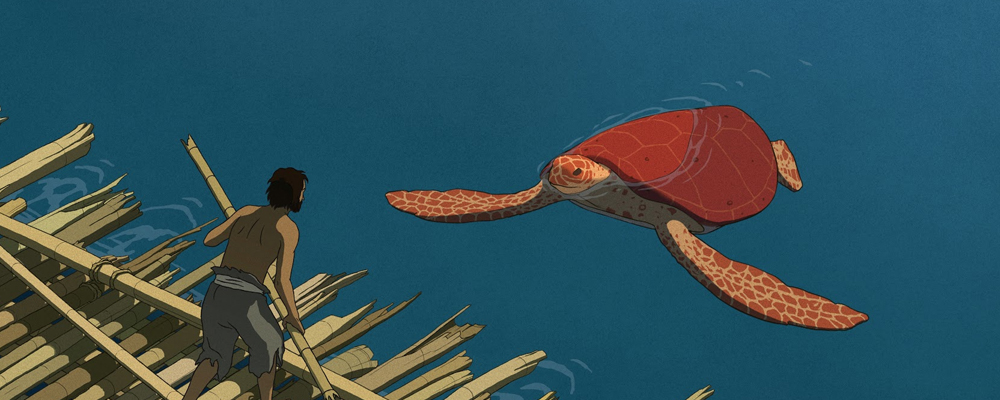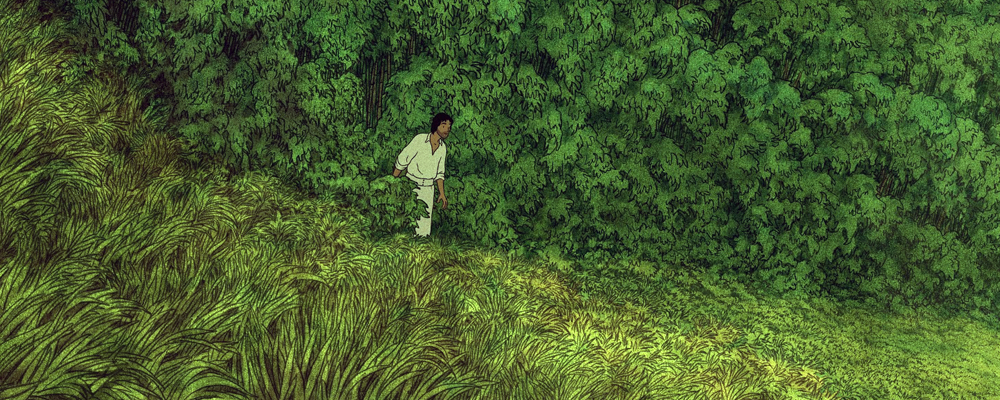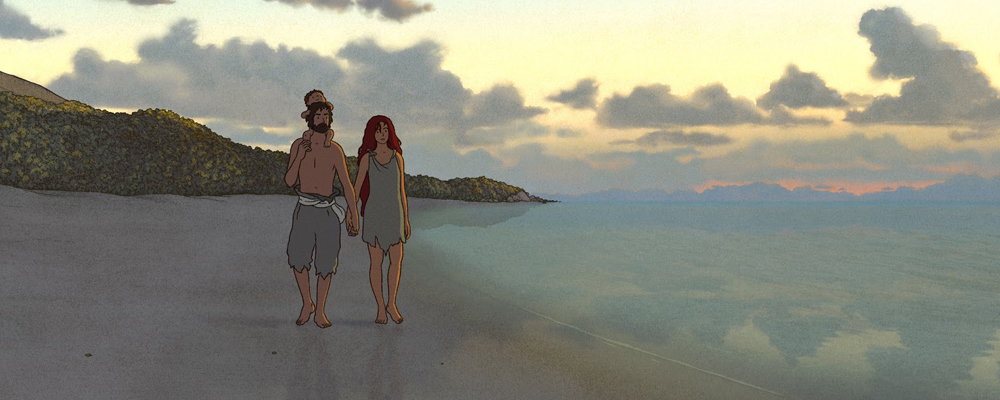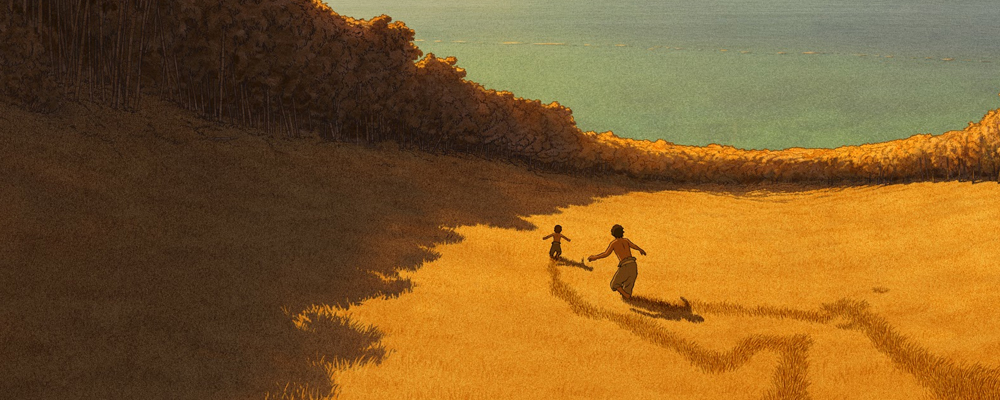Studio Ghibli’s ‘The Red Turtle’ Traces Life on a Desert Island
Allyson Gronowitz
“The Red Turtle” may seem like a surprising production for Studio Ghibli, the Japanese animation powerhouse better known for dazzling, kaleidoscopic fables such as “Spirited Away,” “My Neighbor Totoro” and “Princess Mononoke.” Directed and developed by Dutch animator Michaël Dudok de Wit, “The Red Turtle” is more delicate and introverted – not to mention wordless; it’s a slow moving and deceptively simple film that retains all the philosophical themes and allegories integral to the Ghibli films.
The audience is dropped into the middle of a stormy ocean as a young man desperately clings to his capsized boat. He washes up on an island and assesses his surroundings: swatches of jungle, sweeping expanses of sand-colored rock, and of course, an endless, shimmering ocean in all directions. As this clever pragmatist goes through the motions of ensuring his own survival, we marvel at the impressionistic beauty of the animation, notable for its granularity and the intricate use of light and shadow.
The man strings together bamboo logs and sets sail from his temporary abode, but he doesn’t make it farther than a mile before an unseen menace wrecks his raft, sending him back to the island. Undeterred, he constructs another, larger raft, with the same result. And again. And again. Over the course of these Sisyphean steps, the man becomes more haggard, grows a full beard discards his tattered clothing in favor of seal skin. When a final attempt to escape the island ends, once again, with the destruction of his raft, the man finally comes face to face with his antagonist: a majestic, red sea turtle.
In a heartbreaking sequence soon after, the man lets out his immense (and understandable) frustration on the turtle. But with the appearance of a mysterious woman, he soon begins to come to grips with his place on the island, and “The Red Turtle” takes us through that adaptation with a slow tenderness. Not a word is uttered, but the beauty of the film is that it doesn’t require dialogue – the “stranded on an island” trope is a familiar one, imbued with an innate sense of loss, desperation, but finally, uncomplicated existence. On the island, life is made simple and universal.
The red turtle has a comparatively brief appearance, but its life is laden with meaning nonetheless. Sea turtles are grand in the ocean but vulnerable on land. The film does not shy away from the less palatable aspects of nature, depicting the red turtle’s struggle, a sea lion corpse surrounded by buzzing flies, and the catastrophic destruction wreaked by a tsunami. But there is lightheartedness too, as demonstrated by the recurring motif of the adorable, scuttling crabs.
In embracing the beauty of simplicity, “The Red Turtle” bears the creative handprint of artistic producer Isao Takahata, responsible for critical darlings “The Tale of Princess Kaguya” and “Only Yesterday.” That said, “The Red Turtle” transcends any one person’s vision, reflecting the struggles and triumphs of the luminous universality of life.
“The Red Turtle” opens in New York and Los Angeles on Nov. 18 and nationwide on Jan. 20.




